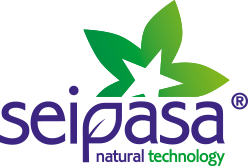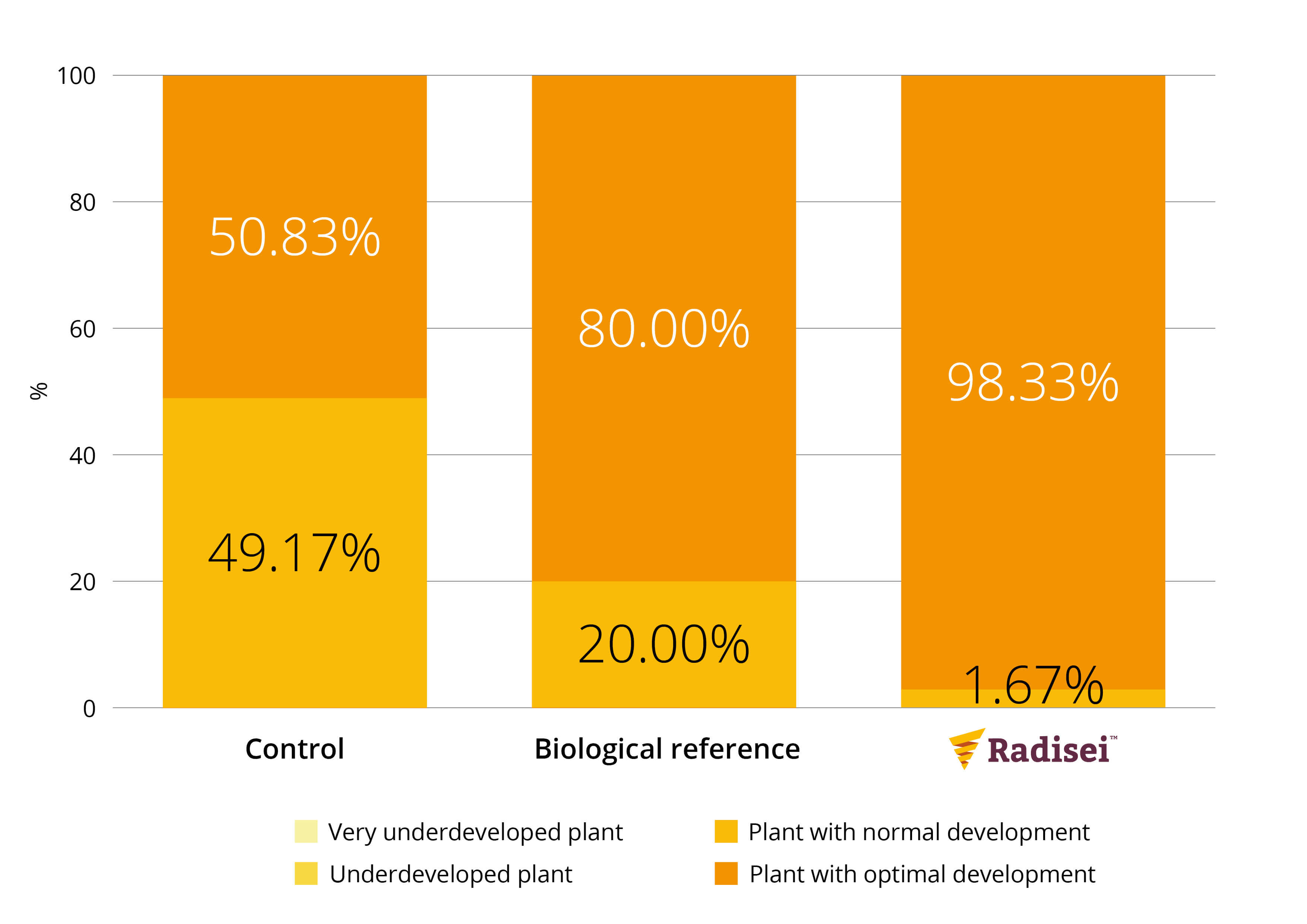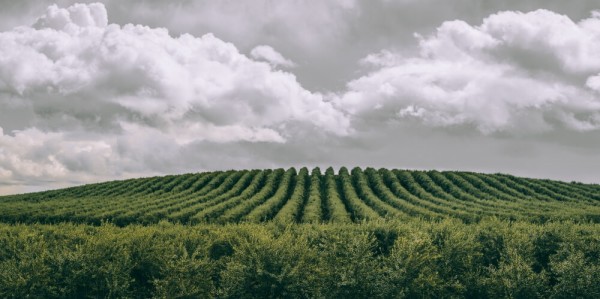Super-intensive almond tree growing: treatments to ensure that trees reach maximum levels of production
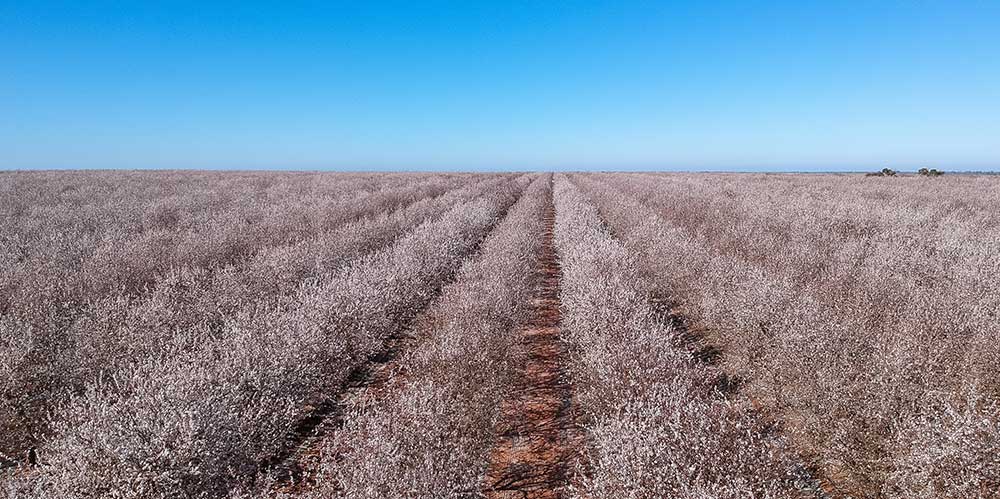
Super-intensive almond tree plantations or hedgerow plantations are gaining ground in Spain thanks to the attractive profitability of the crop and to technological advances that make it a solid option for the agricultural industry. This system that places heavy demands on the trees from the onset of production (in the third year) requires treatments to help trees respond to such a high-demand environment.
Seipasa's biostimulant Radisei is particularly suitable for application in super-intensive almond tree plantations: it boosts the development of the root system, optimises the absorption of essential nutrients, gives the crop an optimal start and encourages high quality yields.
In Spain, the surface area given over to almond tree orchards has increased by 34% over the last decade. Part of this increase is due to the progressive introduction of hedgerow almond tree systems given the cost-effectiveness of this type of plantation and this crop's healthy price situation on the market.
Historically in Spain almond trees have been grown on non-irrigated land with poor soils, a fact that has seriously jeopardised the cost-effectiveness of this dryland almond tree production. More than 85% of Spain's almond-growing hectares are still dryland plantations, compared to the almost 100% irrigated plantations in California, USA, which, moreover, is the leading world producer.
What is the hedgerow system?
In view of this situation, super-intensive or hedgerow almond tree plantations are a system with a greater number of plants per hectare and smaller-sized trees. The rapid technological development that has taken place over the past few years has allowed a high level of technification to be applied, adding greater agility to work and notably reducing labour costs.
The key factor in the super-intensive system is the yield or harvest quantities obtained. With smaller plantation frameworks between trees and a greater density of plants per hectare, earlier onset of production is achieved (in the third year) compared to traditional almond tree plantations (in the fifth year).
During the first years of a hedgerow plantation it is essential to ensure the correct formation of the tree. It is important to obtain an open canopy that allows sunlight to enter and ensures good aeration, since as well as reducing the risk of diseases, it will improve the quality of fruit maturation.
As for treatments, Radisei biostimulant is an ideal alternative for application in super-intensive or hedgerow almond tree systems. Radisei is a root biostimulant developed from an exclusive strain of Bacillus subtilis. This plant growth promoting rhizobacteria (PGPR) improves the root system's architecture by encouraging the growth of new roots and absorbent hairs which help the plant to make better use of the soil's resources.
Its application unblocks essential micro and macronutrients in the soil, which helps trees to absorb and assimilate them much more efficiently. This product is registered with the Ministry of Agriculture, Fisheries and Food and certified for organic agriculture under the UNE standard.
Improved production in super-intensive systems
In super-intensive systems the application of Radisei has benefits throughout the course of the tree's development. In plantations less than a year old, Radisei helps trees to become established: a greater percentage of trees that survive transplanting is obtained, so replanting is not necessary.
The benefits in more developed trees (between the first and third year) is seen in the form of more vigorous, better formed plants, with a better architecture and balanced vegetative development within the fruiting wall that the tree will eventually form, and that will result in more efficient production.
Finally, for trees that are already producing, application of Radisei affords greater production yields.
Looking precisely at yields, the results of the technical trial illustrated in graph 1, show the effect of Radisei on this parameter. The parcels treated with Radisei increased their yield by 9% (+519 kg) compared to the control parcel. In the treatment described, 3 applications were carried out coinciding with the end of the previous season (accumulation of reserves by the tree), sprouting and fruit filling.
.jpg) Graph 1 - Almond yield per hectare (kg/ha).
Graph 1 - Almond yield per hectare (kg/ha).
Graph 2 shows that the application of Radisei maintains these increased yields, not only in in-shell almonds but also in kernels. We thus observe an increase in yield of 8.7% in parcels treated with Radisei compared to 2.5% in those treated with the biological reference product.
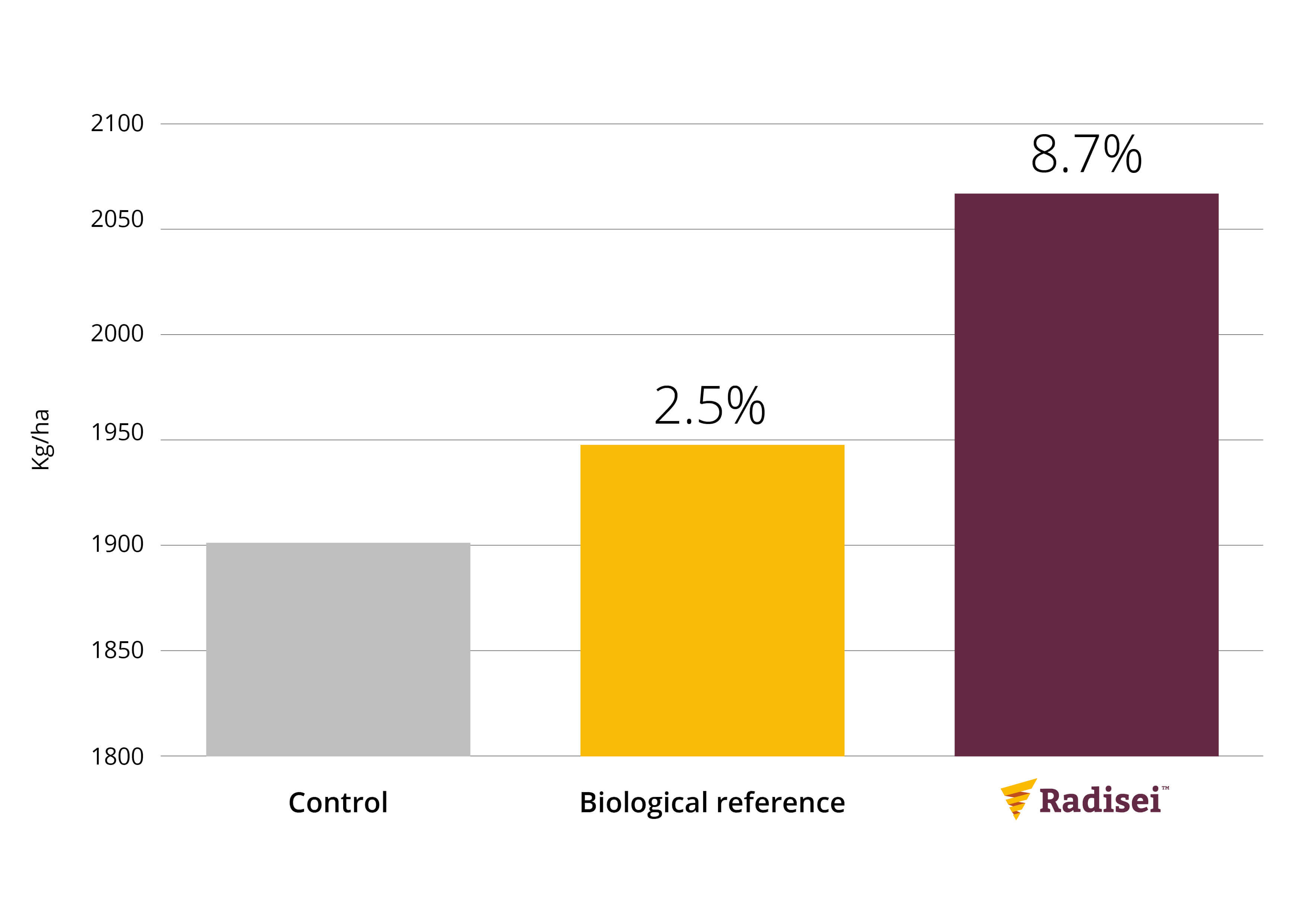 Graph 2 - Almond-kernel yield (kg/ha).
Graph 2 - Almond-kernel yield (kg/ha).
Graph 3 - Effects of Radisei on vegetative development.
In graph 3 it can be seen that the trial parcels treated with Radisei show better vegetative development compared to the biological reference and control group, since practically 100% of the parcels have trees which have developed in optimal conditions. In other words, Radisei improves the architecture, development and quantity of roots in the soil, which in turn has the effect of boosting the vegetative development, sprouting and vigour of the aerial part of the tree.
The data reveal a progressive introduction of almond production systems capable of generating greater profitability. In 2019 irrigated almond tree growing increased by 11.6% in Spain compared to the previous year. Dryland production grew by 3.2% according to figures published by Aeofruse, the Spanish Association for Nut and Carob Producer Organisations.
In this scenario, the design of the strategy, production technology and choice of treatments are of fundamental importance since errors in any of these aspects can ruin the profitability objectives that have been set. As we have seen, the use and application of suitable biostimulant treatments for super-intensive strategies is crucial for accompanying almond trees throughout this process of maximum production demand.
